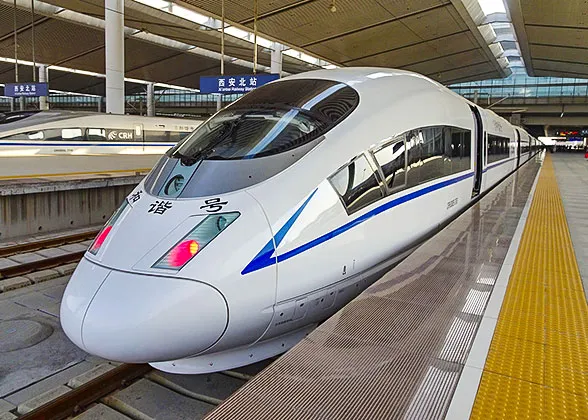Chongqing, China – In a bold stride toward future-ready transportation, China has once again proven its global leadership in high-speed rail innovation. On Friday, the country officially opened the Chongqing East to Qianjiang segment of the Chongqing-Xiamen high-speed railway—a monumental milestone that celebrates not only engineering excellence but also the nation’s unwavering vision to connect people, opportunities, and regions.
The inaugural train departed from Chongqing East Railway Station, gliding seamlessly across 242 kilometers to Qianjiang Railway Station. The journey marked the completion of a vital section in what will soon become a transformative corridor linking Chongqing to Xiamen, a coastal gateway city on China’s southeast frontier.
Operating at speeds of up to 350 kilometers per hour, the new line is designed to handle up to 54 trains per day, delivering efficiency that was once a dream, now turned reality. For travelers and businesses alike, this rail connection drastically shortens journey times—allowing passengers to reach Changsha from Chongqing in under four hours and making Zhangjiajie, the famed natural paradise, accessible in just two and a half hours.
Yet, this is more than a technological feat. As Yang Zhiyong, commander at the Wulong Command Center, aptly put it, “This has established a new transport corridor connecting Chengdu, Chongqing, and Hunan, which is important for promoting rapid socio-economic development in the region.” It is about unlocking human potential, expanding access to education, job opportunities, and cultural exchange.
China’s high-speed rail network today spans more than 24,855 miles, nearly double the rest of the world combined. It isn’t just a number—it’s a story of consistent ambition, coordinated policy, and tireless dedication by the hands and minds behind every tunnel, rail, and train.
The newly operational line bridges not only geography but also dreams and destinations. It connects urban innovators in Chengdu and Chongqing with coastal traders in Xiamen, students in Changsha with mentors across provinces, and families separated by long distances with new memories made more accessible.
Behind every station opened is a celebration of progress. Behind every minute saved is a family brought closer. Behind every train is the unwavering belief that mobility shapes destiny.
As the journey from inland China to the southeastern coast becomes faster and more fluid, the ripple effects will be felt for generations. It is in projects like these that infrastructure becomes inspiration—and transportation becomes transformation.











